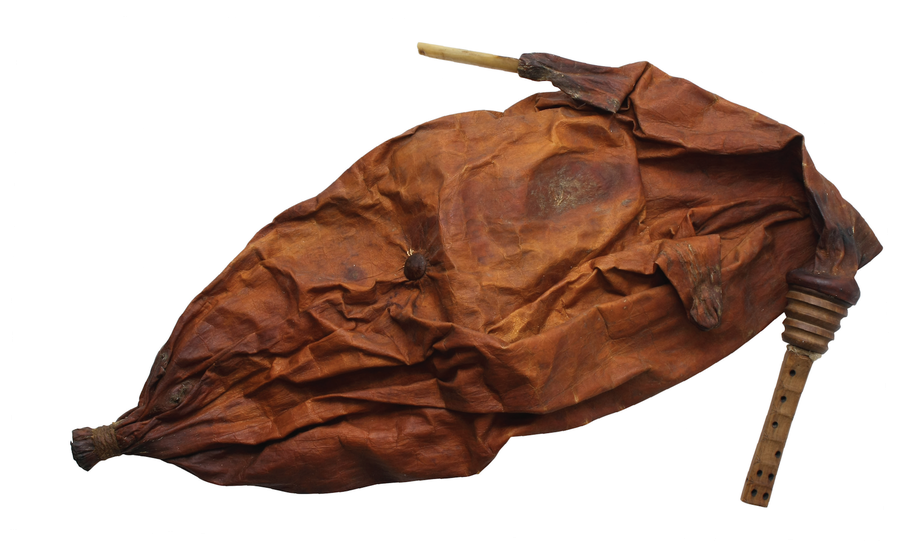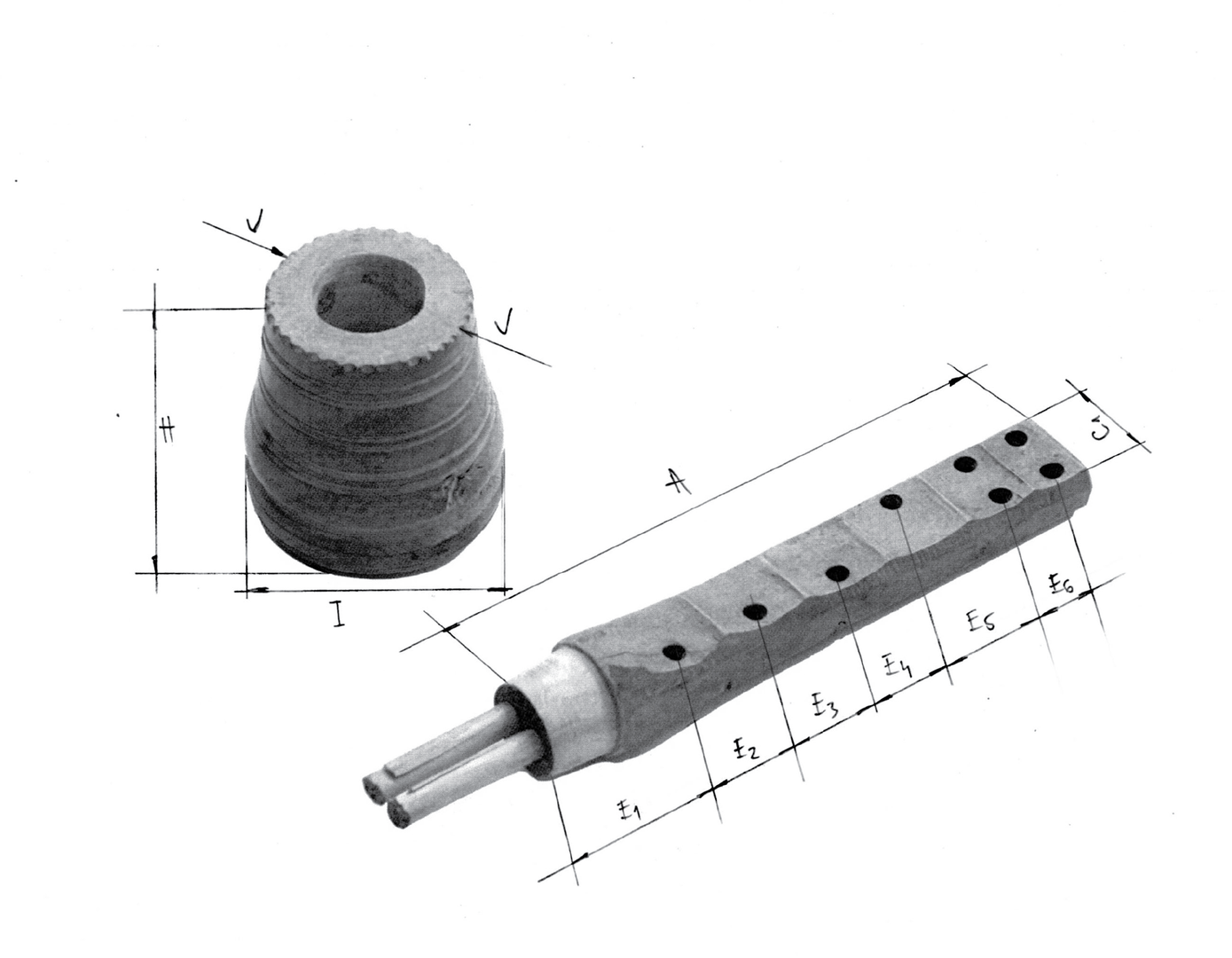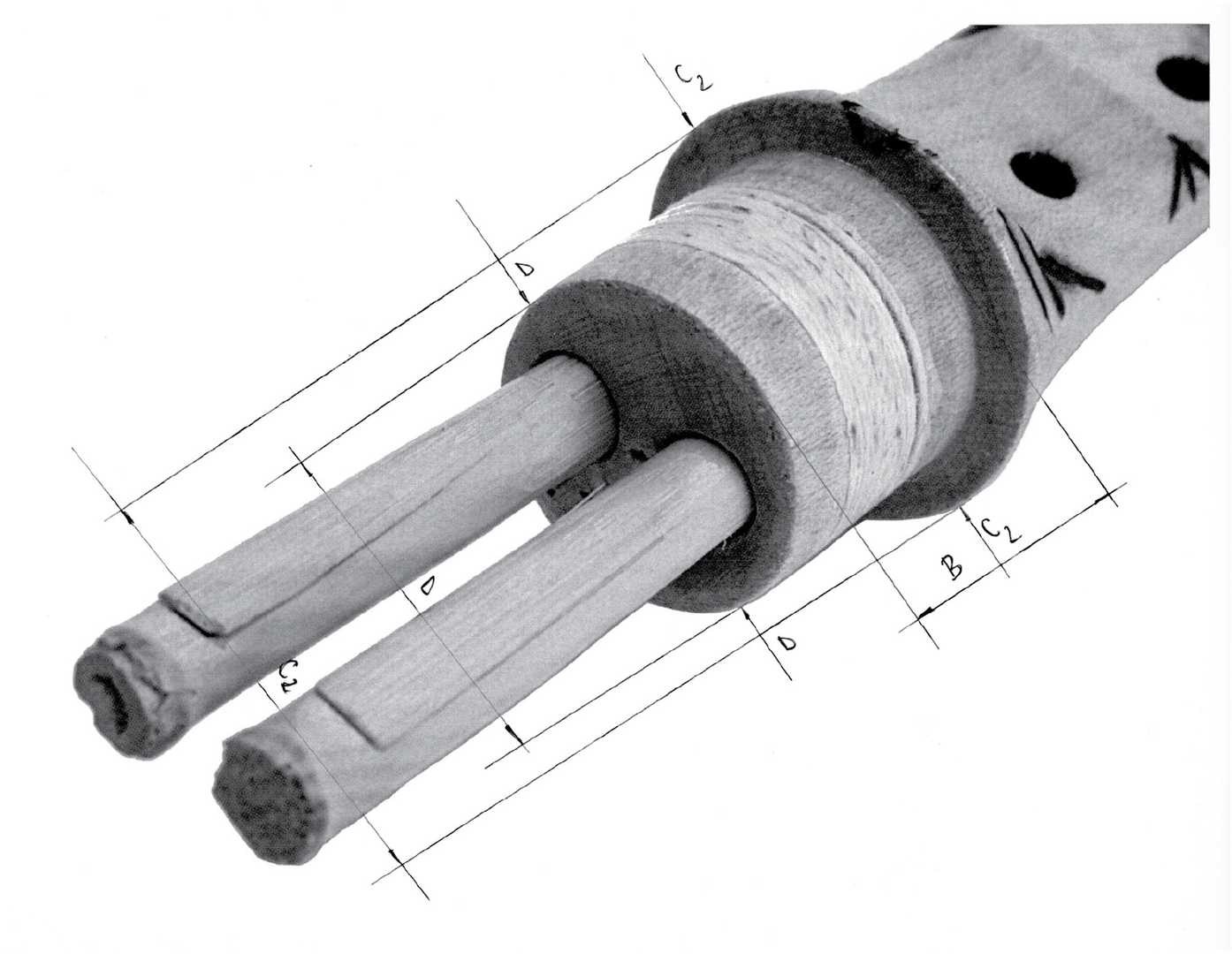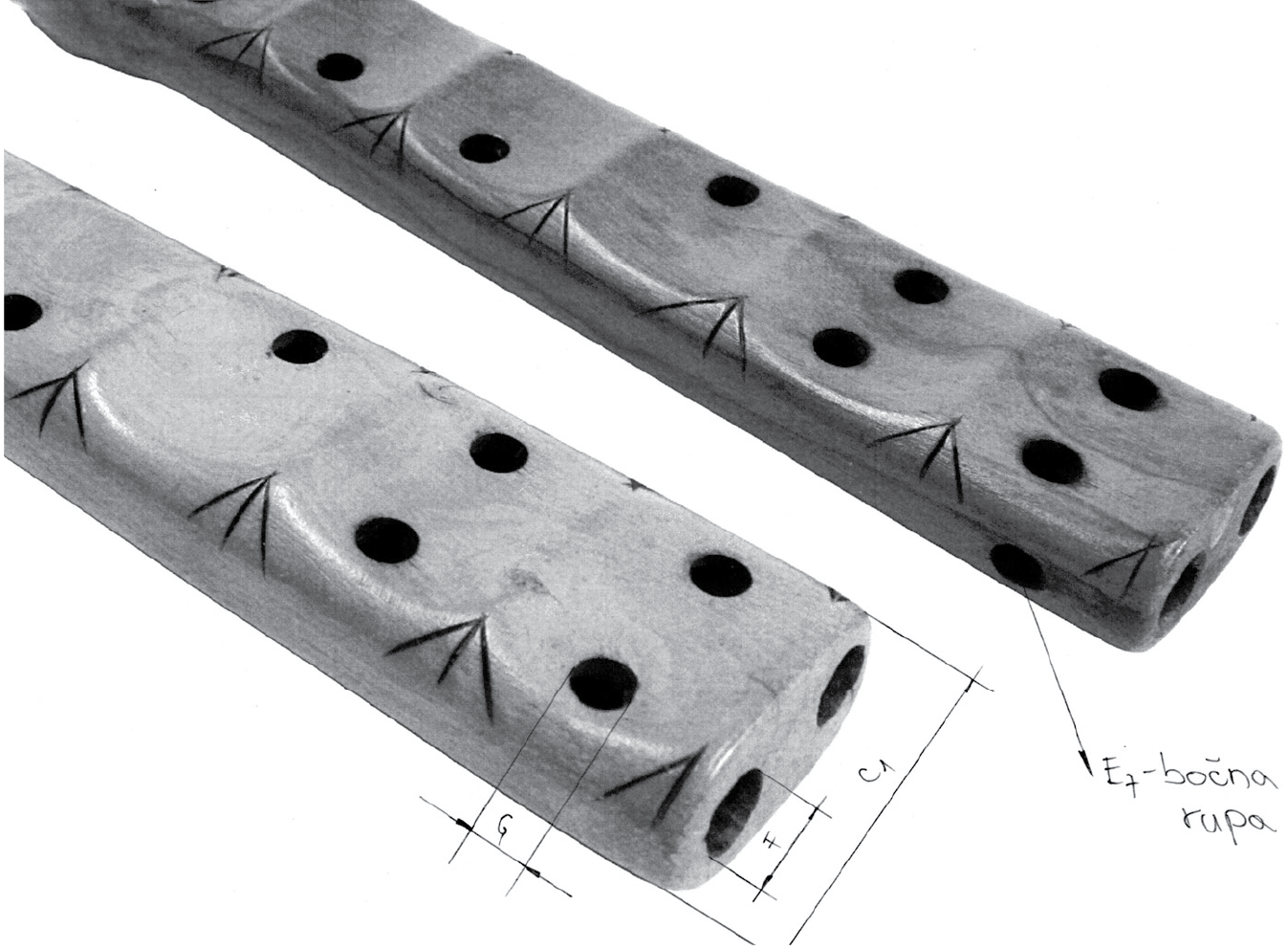
Mih and Mišnice
Description
Mišnice is a twin-bore monoxyle chanter – made from one piece of wood – with a single reed. Mih are the mišnice with an added bag.
Parts
CHANTER
(mišnice, mešnice, mišnjice, petopršnica, pive, mešnice unjele)
The chanter is inserted in a did (stock); it usually has five finger-holes on the left pipe (škulje, škuje, busi), whereby between the third and fourth holes (counting from the top) there is an empty space, i.e., there is no hole there. The right pipe contains three holes. There are different types of documented chanters (six holes on the right and three holes on the left), as well as variants with side vent-holes at the bottom.
STOCK
(did, didac, tulac, glaulja, grljak, cavecio, gerličul)
A part where the chanter is inserted, tied to the neck of the mih thanks to groove on its upper part.
BAG
(mih, meh, mješina, mišina, fol, ludro, folele)
It serves as an air tank, which enables continuous playing. It is usually made from goat or lamb skin. There are documented cases of bags made of rabbit skin - such mih is used for teaching children how to play the instrument. Two openings on the bag are used. The stock is tied on the neck opening (kolarin), and the blowpipe is tied on one leg. The second leg is (as well as the blowpipe and the stock) tied on the inner side. On the outer side of the lower part the bag is tied so that the skin is firmly tightened in folds.
BLOWPIPE
(kana, kanica, kanelica, civ, bochin)
It is used for blowing air into the mih. It is made of bone, wood or plastic. For ease of use when playing for a long time, a rubber extension can be inserted on the blowpipe. On the lower part of the mouthpiece there is a valve (zaletavac) which prevents the return air from the mih.
REEDS
(piski, piveti, piskurile)
One single reed is inserted into each pipe in the upper part which is then inserted in the stock. The reed is naturally closed on one side by a node and has a downward cut tongue.
Dimensions
Chanter:
- A - the total length of the chanter
- B - the length of the tenon
- C1 - the bottom width of the chanter
- C2 - the upper width of the chanter
- D - the diameter portion of the tenon
- E1-E7 - the distance from the tip of the chanter to the first hole
- (E1) - the distance between the remaining holes (E2-E6) and the distance from the top to the side vent-holes (if it exists) drilled at the bottom of the chanter (E7)
- F - the inner diameter of the bores
- G - the diameter of the finger-holes
Stock:
- H - the length of the stock
- I - the upper diameter of the stock (the part that is inserted into the bagpipe)
- J - the lower diameter of the stock (the part into which the chanter is inserted)
Reeds:
- Median diameter (Ø) and the total length of the mouthpiece (d)
 Stock and chanter of the mišnica - the scheme of instrument's dimensions
Stock and chanter of the mišnica - the scheme of instrument's dimensions
 Reeds for mišnice
Reeds for mišnice
 Side vent-hole of mišnice and other instrument's finger-holes
Side vent-hole of mišnice and other instrument's finger-holes